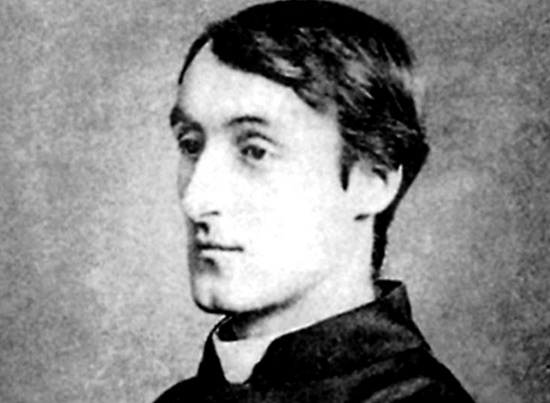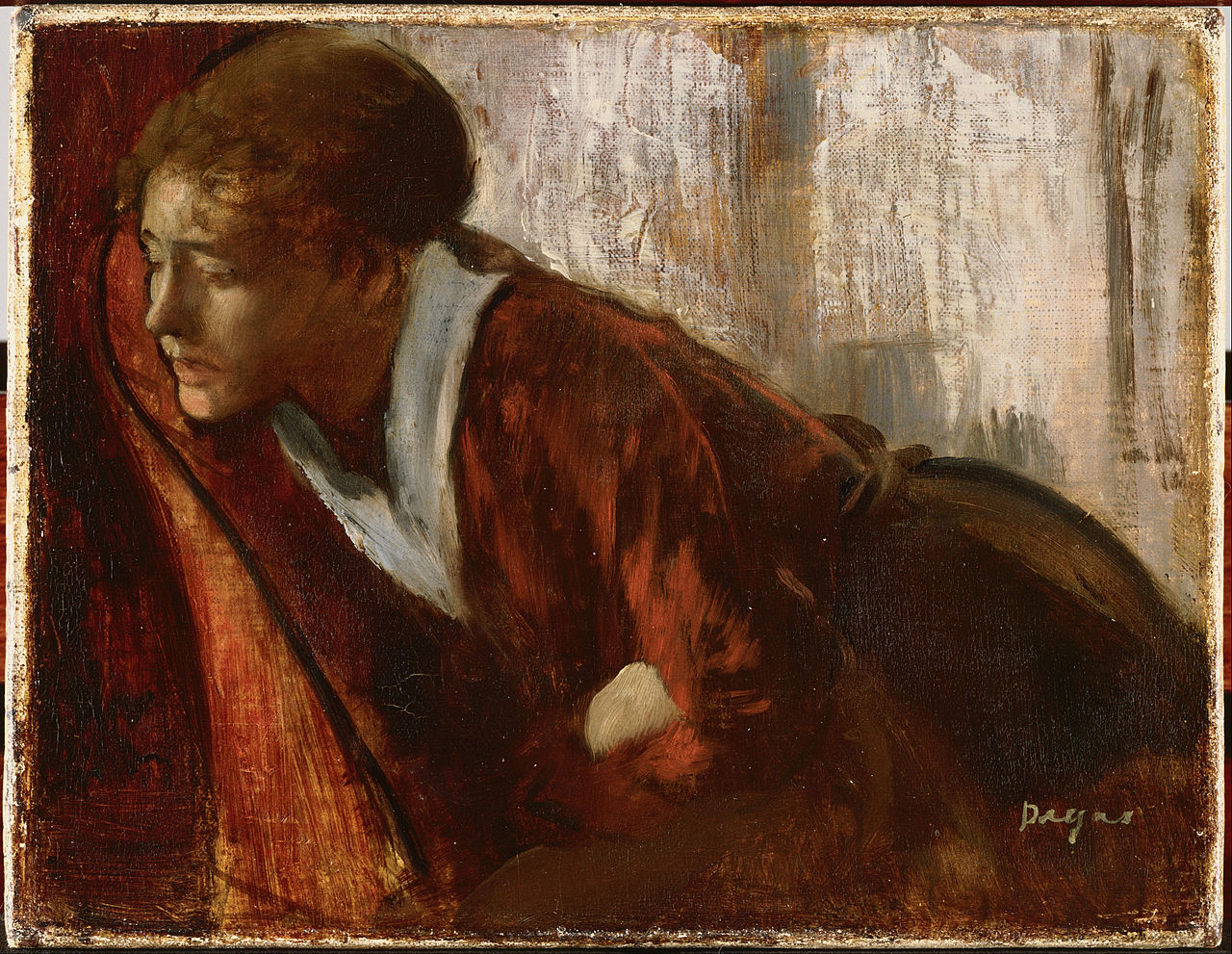About Gerard Manley Hopkins:
Gerard Manley Hopkins is considered to be one of the greatest poets of the Victorian era. Born in 1844, Hopkins was the eldest of the nine children of Manley Hopkins. Hopkins went on to become a poet, a Jesuit Priest and a Professor of Classics. The main themes of his poems were nature and religion. His family played a major role in developing his peculiar style of writing. Because of this, his best poems were not accepted for publication while he was alive. His notable works are ‘Spring and Fall’, ‘Pied Beauty’, ‘God’s Grandeur’ and ‘Carrion Comfort’. He is the inventor of ‘sprung rhythm’, which was first seen in his most ambitious poem, ‘The Wreck of the Deutschland’. A man of many talents and odd style, Hopkins died in 1889 of typhoid fever.
About As Kingfishers Catch Fire:
Hopkins main themes have always been nature and religion. In this poem, ‘As Kingfishers Catch Fire’, Hopkins explores his favorite themes with some specific questions, particularly in the area of identity, purpose, religion and existence.
Setting of As Kingfishers Catch Fire:
There is no fixed setting of the poem. It all revolves around the poet’s themes, including both the physical and the metaphysical, settling on none. The whole poem is like a speech or message by the poet, with no reference as to where he is speaking from. The poem conveys Hopkins’s view that every creature in the world has its own individuality and in portraying that individuality, it proclaims God’s grace.
Poetic Devices in As Kingfishers Catch Fire:
Alliteration
In the first line, ‘dragonflies draw’, in the second, ‘rim in roundy’, in the third, ‘tucked string tells’; Hopkins uses alliteration in abundance in this poem. This aspect induces a particular rhythm and mood and makes the reader focus on the section of the text with the alliteration.
Repetition
The poem is a combination of octet and sestet. In the sestet, four of the six lines have repetition in them. ‘Grace’ in the second, ‘God’s eye’ in the third, ‘Christ’ in the fourth, and ‘lovely’ in the fifth; Hopkins emphasis the significance of these words by making use of apt repetition.
Rhythm
There is a particular rhythm in the text of the poem. The end word of the first line rhymes with the end word of the fourth and the end words of the second and third lines rhyme with each other. This is in the octet. In the sestet, the end words of alternate lines rhyme with each other. For example, ‘flame-name’, ’wells-bell’s’, ‘graces-places-faces’ rhyme with each other.
Imagery
Hopkins is known for his use of ample imagery. This poem starts with imagery. ‘As kingfishers catch fire…’; by this line the readers are made to see a kingfisher, bright and colorful in its flight. Imagery continues from here on in the dragonflies, the wells and bells.
Figurative
Figurative speech remains dominant in the poem. Kingfishers do not actually catch fire and dragonflies do not actually draw flame. It is the poet’s way of speaking of their physical characteristics to make them more dramatic and emphatic. This type of speech is found in the entire text of the poem.
Summary of As Kingfishers Catch Fire:
The kingfisher, a colorful bird, seems like it catches fire when it flies. The fast beating wings of the dragonflies seem like they draw flames. Both of them are beautiful. Stones when thrown down a well tinkle with a sound peculiar to their own. A musical instrument with strings produces a unique sound when plucked. The bells have a sound, which is produced when the pendulum rings against the metal, universally recognized as their own. All of the above mentioned; both the living and the non living have one thing in common. They show what dwells within them. They speak and spell exactly what they are and what they are here to do.
The same concept applies to humans as well. A just man is the incarceration of justice. He is graceful and this grace is seen in whatever he does. He does on earth exactly what God intended for him to do on earth. And so the God sees him as the Christ, who is in ten thousand places and it is his (Christ’s) presence that makes the just man lovely in His eyes.
Analysis of As Kingfishers Catch Fire:
The poem is pretty complex thanks to the peculiar writing style of Hopkins. The poem has 14 lines and it uses a rhyme scheme. So the poem is a sonnet, more specifically it is a Petrarchan sonnet, which is a sonnet form popularized by Petrarch. This is supported by the fact that the poem is an octave and a sestet with the rhyming sequence of abbaabba in the octet, a vital requirement for Petrarchan sonnet.
In the octave, the poem makes use of the physical world to speak of inner self. It includes birds and insects and even inanimate objects. The speaker tells the reader what makes these objects and birds, objects and birds. It is their inner self which they drag out from within and project into the outer world. The inner self makes them them and what they do is all a reflection of their inner self.
He extends this concept to man and says that with justice within, a just man acts as God intends him to and as a result becomes a child of God, the Christ who is both God and man; and hence, he is looked upon with love by Him.
True to the prevalent themes in his poems, Hopkins sticks with nature and religion in this poem too. The octave is filled with nature and natural beings and things. The sestet leans more towards the religious.
Hopkins makes use of some radical phrases or words. He makes self (noun) to selves (verb use) in line 7 of the poem. Similarly in the 1st line of the sestet, he uses justices as another verb. They are not conventional words in English but Hopkins does not back away from using them inappropriately. Another unique identity of the poems of Hopkins lies in their syntax. It is complex and wordy and this can be seen in this poem too. The reader struggles a little to read the poem smoothly.
Central Idea of As Kingfishers Catch Fire:
Every living being in this world has a self and it acts according to it; be it living or inanimate. It is more of a dormant compulsion rather than a conscious effort. Nature follows this more closely; nature which has a lower level of self-conscious and hence a higher level of self. Nature has no doubt. She just follows what is within.
The human is more complex with higher conscious levels and hence, more doubts in his character. But if a human follows what his inner self tells him to, and be just in all his dealings, then he would have achieved a higher level of proximity to Him. For God loves those who stay true to their self, and act it. And only thus, human can become something more than a human.
This is the central idea of the poem; to tell the readers to stay true to themselves, and be just and graceful, and in turn achieve a higher plane of existence, closer to God.
Tone of As Kingfishers Catch Fire:
The tone of the poem is inspiring and an eye opener. It is different from his other poems in that rather than concentrating on humans in relation to nature and morality, Hopkins speaks more of what he believes to be the purpose of mankind.
Conclusion
Manley Hopkins presents a logical and concise argument and plea where he tells his readers that following their inner self is the way to get closer to God. In this poem, Hopkins explores the purpose of mankind by relating it to nature. He ends the poem by saying that there is a dormant Christ in all of us and all it takes for us to become Him, is to be true to ourselves and just.
Contributor: Uttej Reddy
Some online learning platforms provide certifications, while others are designed to simply grow your skills in your personal and professional life. Including Masterclass and Coursera, here are our recommendations for the best online learning platforms you can sign up for today.
The 7 Best Online Learning Platforms of 2022
- Best Overall: Coursera
- Best for Niche Topics: Udemy
- Best for Creative Fields: Skillshare
- Best for Celebrity Lessons: MasterClass
- Best for STEM: EdX
- Best for Career Building: Udacity
- Best for Data Learning: Pluralsight












